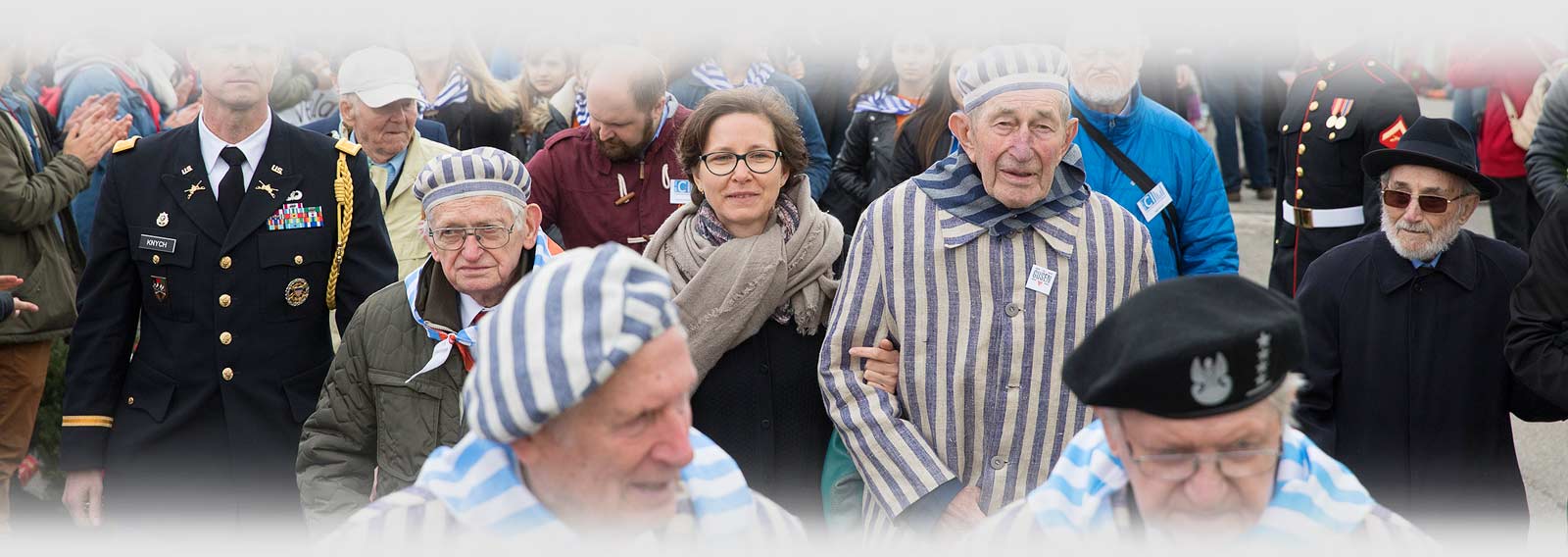Hans Maršálek
Hans Maršálek was born in Vienna on 19th July 1914. He was a typesetter by profession but was called up for the Wehrmacht following the Austrian occupation by Nazi Germany.
Due to his anti-fascist stance he fled Austria on 19th September 1938 for Czechoslovakia. After the German occupation of Czechoslovakia and the establishment of the "Protectorate of Bohemia and Moravia", Maršálek helped Social Democrat soldiers escape to Sweden.
He subsequently worked as an accountant for the Compass Company in Prague and was active in the Czech Communist Party between 1940-41, including a three-month stay in Vienna. On 28th October 1941, Maršálek was arrested in Prague and transferred to Vienna on 3rd November where he spent several months in the regional and Gestapo prisons. On 28th September 1942 he was sent to Mauthausen concentration camp. After being assigned first to the building commando, then the lumberjack commando in Königswesen, and the "Wiener Graben" quarry he was eventually assigned work as a clerk. Prisoners from all over Europe worked in the office of the main camp, including Czech, Spanish and German prisoners and later other nations. The political prisoners in the office were a central point of the solidarity and resistance in the camp.
It was only in the days leading up to and including liberation in May 1945 that the then-illegal International Mauthausen Committee truly came into its own when it began the task of assisting with the handover of the camp to the Americans, providing the first provisions and assisting with the repatriation of liberated prisoners.
Due to his extensive knowledge of the Mauthausen concentration camp and how it worked, Hans Maršálek was singularly qualified for the task of creating a museum at the Mauthausen memorial site, which had been established in 1947. Hans Maršálek became the annalist of Mauthausen and every academic work that had been written since about the camp would not have been possible without his extensive documentation and the rich archive that he built pretty much single-handedly. As well as documents that he was able to acquire immediately following liberation, he was also able to use his position as a police employee to acquire the death book of Gusen concentration camp from an exhibition in Wiener Neustadt for the archive, interview people and produce transcripts and protocols.
In 1963, Hans Maršálek was transferred from the Police to the Ministry for the Interior, overseeing the development and building of the museum and the foundation of the incredible archive. Alongside this work, he began publishing about the concentration camp, starting with small brochures, painstakingly put together and then onto his most important publication "The History of the Mauthausen Concentration Camp", first published in 1974, four years after the opening of the museum. The book remains the standard work on this topic and the archive he built was the foundation for both the book and the museums. His efforts and dedication to history of the Mauthausen Concentration Camp were recognised with the conferment of an honorary doctorate from the Johannes Kepler University, Linz.
As well as his academic work on Mauthausen, Hans Maršálek was also determined that the sub-camps of Mauthausen be included in the memorial work. In anticipation of a time when there would be fewer and eventually no survivors anymore, Hans Maršálek sought out partners in the youth branches of the trade union organisation and the Catholic Church. Through this cooperation in the management of the sub-camps and over a ten-year period, the Austrian Mauthausen Committee was developed, later to become the successor organisation for the Austrian Camp Community.
Hans Maršálek remained on good terms with those comrades and fellow-sufferers of Mauthausen concentration camp. He was for many years the Chair of the Austrian Camp Community. Together they worked tirelessly and unflinchingly that the events be never forgotten and that they should never happen again.

